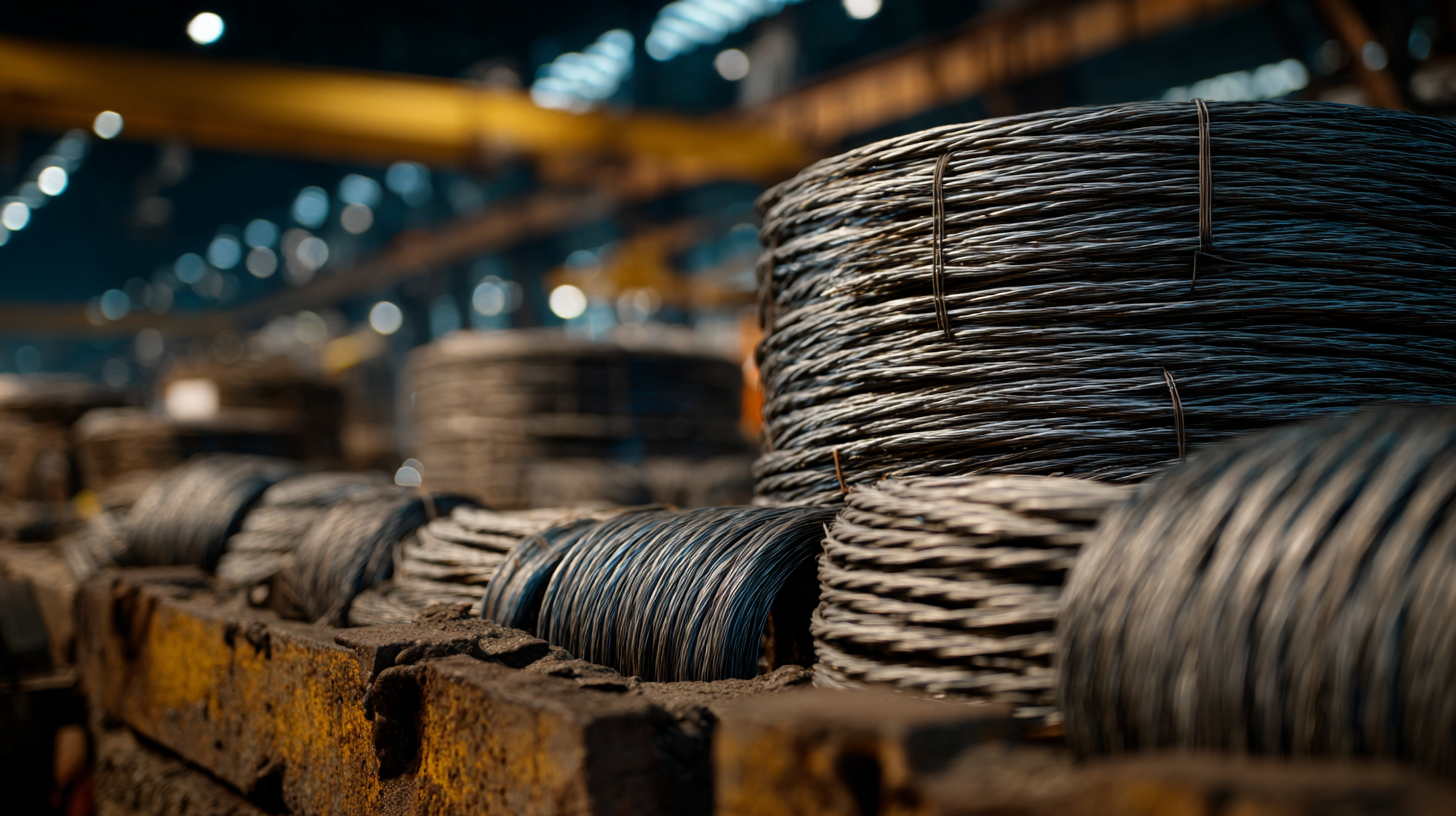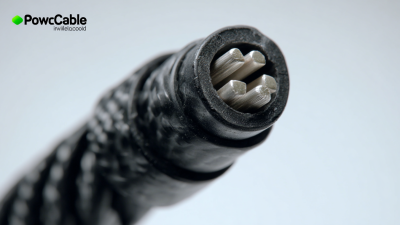Exploring Unique Applications of High Temperature Wire in Various Industries
In today's rapidly advancing technological landscape, the demand for materials that can withstand extreme conditions is more critical than ever. Among these materials, High Temperature Wire stands out due to its remarkable ability to maintain performance and integrity under intense heat. This blog will delve into the unique applications of High Temperature Wire across various industries, highlighting its importance in ensuring safety, reliability, and efficiency. From aerospace and automotive sectors to renewable energy and industrial manufacturing, High Temperature Wire is revolutionizing the way we approach high-performance engineering challenges. Join us as we explore innovative uses of this versatile component, uncovering the myriad ways it enhances operational capabilities and drives progress in diverse applications. Discover how integrating High Temperature Wire into systems can lead to superior results, making it an indispensable asset in today’s competitive environment.

Understanding the Basics of High Temperature Wire: What You Need to Know
High temperature wire is an essential component in a variety of industries, offering crucial performance characteristics that are not found in standard wire. Understanding the basics of high temperature wire is vital for engineers and technicians who need to select the right materials for their applications. Typically made from materials like silicone rubber, ceramic, or PTFE, high temperature wires are designed to withstand extreme conditions, including significant thermal fluctuations and potential exposure to corrosive substances.
One of the primary considerations when working with high temperature wire is its temperature rating. Most high temperature wires can operate effectively at temperatures exceeding 200 degrees Celsius, with some specialized types capable of handling even higher limits. This temperature resilience makes them ideal for use in aerospace, automotive, and industrial settings, where machinery and equipment can heat up rapidly. Additionally, the insulation used in high temperature wires contributes to their durability, providing resistance to wear, chemicals, and mechanical stress, which is essential in maintaining system integrity in challenging environments.
Key Properties of High Temperature Wire for Industrial Applications
High temperature wire possesses a range of key properties that make it indispensable across various industrial applications. One of its most significant characteristics is its ability to withstand extreme thermal environments. Typically constructed from materials such as silicone-coated wires, fiberglass, or special alloys, these wires can operate effectively in temperatures exceeding 1,000 degrees Fahrenheit. This high thermal resistance is crucial for industries such as aerospace, automotive, and energy, where wiring must endure challenging conditions without degrading.
In addition to heat resistance, high temperature wire offers exceptional durability and chemical resistance. These wires are often designed to withstand exposure to harsh chemicals, moisture, and mechanical stress. For instance, in the petrochemical industry, where pipes and vessels might expose wiring to corrosive substances, high temperature wire maintains integrity, ensuring safety and functionality. Furthermore, its flexibility allows for ease of installation in complex machinery, making it a preferred choice for engineers looking to optimize both performance and reliability in extreme conditions.
Innovative Uses of High Temperature Wire in Aerospace Engineering
In recent years, the aerospace engineering sector has witnessed a surge in the adoption of high temperature wire, a critical component in ensuring the safety and efficiency of various aircraft systems. These wires are designed to withstand extreme temperatures while maintaining their integrity and performance, making them essential for applications in engine systems, electrical wiring, and thermal insulation. The innovative properties of high temperature wire enable it to perform reliably under intense operational conditions, contributing to the overall advancement of aerospace technologies.

With the global push towards innovation and sustainability, industry players are increasingly focusing on the development and deployment of new materials that cater to the unique demands of aerospace applications. Recent events, such as the international import expos, have highlighted the importance of showcasing advanced materials and solutions. Companies are unveiling their latest technologies, emphasizing their commitment to enhancing operational efficiency and reducing environmental impact. High temperature wire plays a key role in this narrative, supporting cutting-edge aerospace designs while adhering to strict regulatory standards, ultimately paving the way for safer and more efficient air travel.
High Temperature Wire in the Automotive Industry: Enhancements and Benefits
 High temperature wire is increasingly becoming a cornerstone in the automotive industry, particularly as manufacturers strive for enhanced performance and efficiency. The integration of advanced materials, such as carbon nanotube-polymer composites, is revolutionizing the way high temperature wire functions. These materials not only withstand elevated temperatures but also contribute to reducing the overall weight of the vehicle, a crucial factor in improving fuel efficiency and performance. The synergy of high temperature wire with lightweight materials illustrates a trend toward achieving greater mechanical efficiency in traction motors, making electric vehicles more competitive.
High temperature wire is increasingly becoming a cornerstone in the automotive industry, particularly as manufacturers strive for enhanced performance and efficiency. The integration of advanced materials, such as carbon nanotube-polymer composites, is revolutionizing the way high temperature wire functions. These materials not only withstand elevated temperatures but also contribute to reducing the overall weight of the vehicle, a crucial factor in improving fuel efficiency and performance. The synergy of high temperature wire with lightweight materials illustrates a trend toward achieving greater mechanical efficiency in traction motors, making electric vehicles more competitive.
Moreover, the utilization of high temperature wire supports the ongoing advancements in additive manufacturing technologies within the automotive sector. This method allows for precise control over the quality and accuracy of manufactured parts, thereby addressing challenges associated with heat input and residual stresses. As electric motor technologies evolve, the potential for high temperature wire to enhance electric motor efficiency is significant. For instance, incorporating advanced materials like graphene into wire components promises improvements in electrical conductivity at high temperatures, ultimately driving innovation in automotive design and sustainability efforts.
Future Trends in High Temperature Wire Technology Across Different Sectors
High temperature wire technology is rapidly evolving across various sectors, with significant trends indicating its transformative potential. The global market for high temperature superconducting cables is witnessing substantial growth, driven by advancements in materials such as Yttrium Barium Copper Oxide (YBCO) and Calcium Copper Oxide. These materials enable more efficient energy transmission and are essential for applications in sectors such as energy, transportation, and aerospace.
As industries increasingly adopt digital and intelligent solutions, the demand for high temperature wire applications continues to rise. The superconducting industry is particularly poised for breakthroughs, with ongoing initiatives focusing on the commercialization of low and high temperature superconducting materials. Recent events, such as the technology innovation conferences, highlight the urgent need for collaborative efforts to enhance the integration of high temperature wire in smart energy systems. This synergy will not only boost efficiency but also promote sustainable practices, underscoring the technology's pivotal role in shaping a greener future.
Exploring Unique Applications of High Temperature Wire in Various Industries - Future Trends in High Temperature Wire Technology Across Different Sectors
| Industry | Application | Temperature Range (°C) | Material Type | Future Trends |
|---|---|---|---|---|
| Aerospace | Wiring in Jet Engines | -200 to 2000 | Nickel Alloy | Increased reliability and reduced weight |
| Automotive | High-performance Engine Components | -40 to 250 | Copper and Insulation | Integration with smart technology |
| Energy | Power Generation Systems | -50 to 1000 | Silicone-coated wire | Advancements in renewable energy applications |
| Telecommunications | High-frequency Communication Lines | -60 to 300 | High-temperature polymers | Next-generation 5G applications |
| Manufacturing | Industrial Heating Elements | 0 to 1200 | Stainless Steel | Automation and increased efficiencies |
Related Posts
-

7 Compelling Reasons to Choose the Best Rubber Cable for Your Industry Needs
-

How to Choose the Best Power Cable for Your Global Sourcing Needs
-

Ultimate Comparison: Top 5 Best Medium Voltage Cables for Your Industrial Needs
-

Exploring Innovative Alternatives to Best Power Cable Electrical for Sustainable Solutions
-

Empowering the World with China's Leading Electrical Power Cable Innovations
-

Empowering Global Connections with China's Finest Voltage Cables
